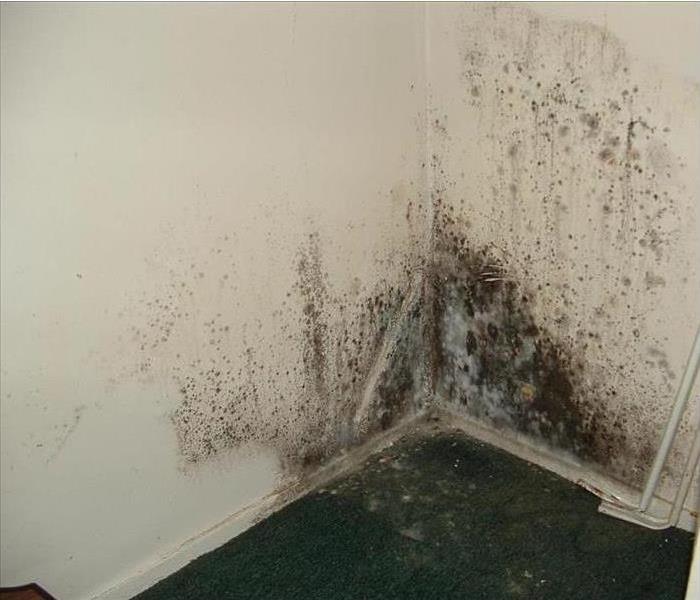Understanding Mold
7/9/2021 (Permalink)
In as little as 48 hours, mold can quickly become a problem in your home or business when there’s a water intrusion, like a roof leak or leaking water line. Mold can cause health effects and can also cause significant damage to your property. SERVPRO Franchise Professionals have the training, protective gear, and specialized equipment necessary to handle your mold problem.
Mold Prevention Tips
- Fix leaky plumbing and leaks in the building envelope as soon as possible.
- Watch for condensation and wet spots. Fix sources of moisture problems as soon as possible.
- Prevent moisture due to condensation by increasing surface temperature or reducing the moisture level in air (humidity). To increase surface temperature, insulate or increase air circulation. To reduce the moisture level in the air, repair leaks, increase ventilation (if outside air is cold and dry), or dehumidify (if outdoor air is warm and humid).
- Keep heating, ventilation, and air conditioning (HVAC) drip pans clean, flowing properly, and unobstructed.
- Vent moisture-generating appliances, such as dryers or showers to the outside where possible.
- Maintain low indoor humidity, below 60% relative humidity (RH), ideally 30-50%, if possible by providing adequate ventilation.
- Perform regular building/HVAC inspections and maintenance as scheduled.
- Clean and dry wet or damp spots within 48 hours.
- Don’t let foundations stay wet. Provide drainage and slope the ground away from the foundation.
- Use exhaust fans whenever cooking, dishwashing, and cleaning in food service areas.
- Inspect the building for signs of mold, moisture, leaks or spills:
- Check for moldy odors.
- Look for water stains or discoloration on the ceiling, walls, floors and window sills.
- Look around and under sinks for standing water, water stains or mold.
- Inspect bathrooms for standing water, water stains or mold.
- Do not let water stand in air conditioning or refrigerator drip pans.
- Clean mold off hard surfaces with water and detergent, and dry completely.
- Absorbent materials such as ceiling tiles, that are moldy, may need to be replaced.
- Check the mechanical room and roof for unsanitary conditions, leaks or spills. v Reduce the potential for condensation on cold surfaces (i.e., windows, piping, exterior walls, roof, or floors) by adding insulation.




 24/7 Emergency Service
24/7 Emergency Service
